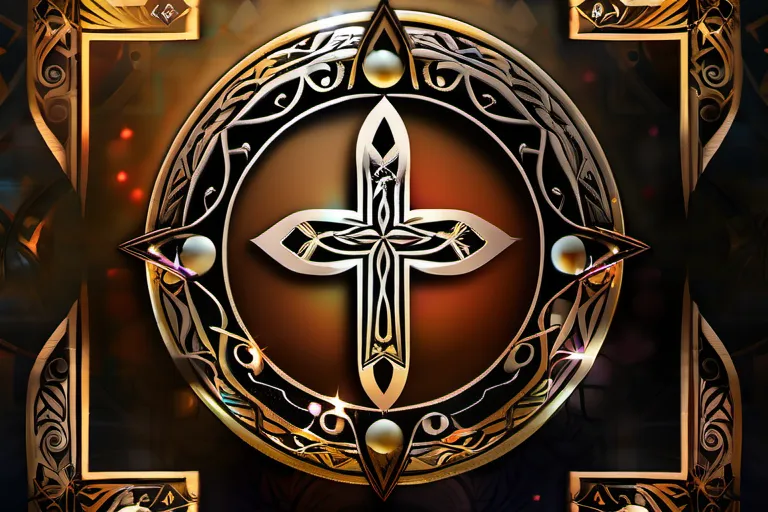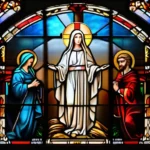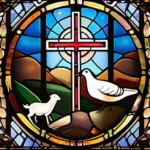Exploring the fusion of ancient pagan practices and Christian beliefs in early Christianity
In this article, we delve into the fascinating world of Pagan Christianity, a unique blend of ancient pagan practices and Christian beliefs that emerged during the early centuries of Christianity. This exploration will shed light on the core beliefs that shaped the development of Christianity as we know it today.
The Emergence of Pagan Christianity
The emergence of Pagan Christianity was like a whisper in the tumultuous winds of ancient history, a marriage between two worlds that seemed at first glance to be irreconcilable yet intertwined by common threads. How did such a blend come about? Was it through the natural evolution of beliefs or a deliberate blending for survival and expansion?
In the cradle of the Roman Empire, where gods and goddesses were worshipped in every corner, Christianity found its footing. The landscape was already cluttered with deities like Apollo, Diana, and Mars, each with their own festivals and rituals. How could a new religion claiming one God possibly compete? It wasn’t just about belief; it was about belonging. Early Christians needed to find a way to fit in without losing their identity.
The process of Pagan Christianity wasn’t sudden but gradual, like a river carving its path through rock. Pagans began incorporating Christian symbols and practices into their rituals. Wasn’t the sun god Apollo already revered as a phoenix rising from ashes? Why not embrace this symbol to celebrate resurrection? The cross, with its ancient pagan connotations of life and death, became a potent symbol for both faiths.
The early Christians faced challenges; they were often seen as outsiders, different in every way. But by molding their practices around familiar rituals and deities, they found acceptance. It was a delicate dance between tradition and innovation, where each step required careful consideration to maintain the core of Christian belief while respecting the cultural milieu.
The emergence of Pagan Christianity was not just about survival; it was a testament to human adaptability. By blending traditions, early Christians created something that resonated with people on a deeper level, making their faith more accessible and relatable. It’s like taking ingredients from different kitchens and mixing them to create a dish that everyone can enjoy.
So, as we delve into the core beliefs of Pagan Christianity in our next chapter, remember that this wasn’t just about religion; it was about identity, community, and the universal search for meaning within the complex tapestry of human history.
Core Beliefs: Syncretism and Acculturation
Imagine early Christianity as a seed, planted in the fertile soil of ancient pagan practices and beliefs. How did these two vastly different systems of thought intertwine to create something new? Syncretism, a term that captures the essence of this fusion, describes the process where elements from one belief system are incorporated into another. This wasn’t just a simple exchange; it was a profound transformation where the lines between pagan and Christian practices blurred.
Consider the adoption of pagan deities as an example. In many early Christian communities, local gods were sometimes equated with or identified as aspects of the Christian Trinity. This syncretistic practice wasn’t just about appeasing locals; it was a strategic move to bridge old and new beliefs. By blending familiar figures into their narrative, Christians aimed to make their message more palatable and less alienating. It’s like trying to fit a square peg in a round hole, but doing so in such a way that both pieces are transformed, creating something entirely new.
Rituals also played a significant role. The practice of baptism in water, for instance, was adapted from the purification rites common in many pagan traditions. This adaptation wasn’t just functional; it carried symbolic weight. Just as water is central to both baptism and rituals like baptism by fire or spring cleaning, so too did it become a shared language between pagan and Christian practices.
The process of acculturation—where cultures adopt each other’s customs and beliefs—is crucial here. Think about it: how does one culture change another without changing itself in the process? In early Christianity, this mutual influence meant that both systems were reshaped and redefined through their interactions. It’s like two dancers, where neither merely performs but instead creates a new dance together, stepping on each other’s feet and finding balance.
This syncretism wasn’t without controversy or resistance within the Christian community. Some saw it as a necessary evil to spread the faith, while others viewed it with suspicion. But whether seen as a bridge or a burden, this fusion of pagan practices and Christian beliefs laid the groundwork for what would eventually become a distinct form of early Christianity.
The Role of Pagan Symbols in Early Christianity
Imagine Pagan Christianity as a mosaic, where ancient beliefs and symbols blend into the framework of Christian teachings. During the early centuries of Christianity, pagan symbols began to make their way into the artistic and architectural tapestry of churches and cathedrals. How did these symbols come to represent both old and new faiths? Why were they chosen for such prominent places?
Consider the cross, a symbol deeply rooted in Christian imagery, yet its origins can be traced back to pagan times. In ancient Rome, the cross was associated with Cybele’s sacred tree and Tammuz’s sacrifice. How did this symbol transition from representing paganism to becoming one of Christianity’s most revered symbols? Was it merely a case of acculturation, or were there deeper spiritual resonances at play?
In Christian art, you might find the anchor, often used as a symbol of hope. This too has roots in paganism, where it was an emblem of Poseidon and his power over the sea. How did this imagery merge with Christian teachings on faith and salvation? Was there a deliberate choice to use such symbols to connect new believers to their own cultural heritage while simultaneously introducing them to Christian concepts?
Or take the swastika, which predates Christianity by millennia, originally used in Hinduism as a symbol of auspiciousness. In early Christian art, it appeared on walls and manuscripts, often alongside Christian motifs. Was this an act of syncretism, or was there a deeper significance that went beyond mere decoration?
The use of these symbols highlights the complex interplay between old and new beliefs during the formative years of Christianity. It’s as if Christianity and pagan practices were two streams merging into one, each enriching the other in ways that are still debated today. By understanding this fusion, we gain insight not only into early Christian history but also into how religious traditions adapt and evolve over time.
So, as you explore these symbols in Christian art and architecture, ask yourself: What does their presence tell us about the beliefs of those who created them? How did they reconcile their old practices with their new faith?
Pagan Influences on Christian Rituals
Imagine early Christianity as a canvas, where artists painted both Christian and pagan elements side by side. How did these two seemingly disparate traditions come together to form what we now know as Pagan Christianity? Let’s explore how pagan rituals were adapted or incorporated into Christian practices, particularly in the celebration of Christmas and Easter.
Take Christmas for instance. Many would argue that this holiday is purely about celebrating the birth of Jesus Christ, but look closer—could it be a blend of pagan solstice festivals? The early Christians didn’t just pick December 25 out of thin air; they chose this date because it coincided with the Roman Saturnalia and the Germanic Yule. By adopting these dates, they were essentially saying, ‘Let’s embrace the light that comes at the darkest time of year, but our celebration now honors Jesus as the true source of light.’ It’s like wrapping a familiar tradition in a new, religious significance.
Easter presents another fascinating fusion. The date of Easter was originally based on the Jewish Passover, which commemorates the liberation of the Israelites from slavery. However, early Christians adapted this by aligning it with the pagan festival of Eostre, a goddess associated with spring and fertility. By doing so, they created a holiday that honored both the resurrection of Christ and the rebirth of nature in spring. It’s as if the two traditions were dancing together, each acknowledging the other’s importance while adding their unique spin.
These examples illustrate how early Christians navigated the complex landscape of cultural influences. They saw an opportunity to integrate pagan practices into a Christian framework, making it easier for converts who had grown up with these rituals to embrace Christianity. It’s like taking a familiar song and giving it new lyrics, allowing people to keep their traditions while also accepting a new faith.
The Impact of Pagan Christianity on Modern Beliefs
How can we truly understand modern Christian beliefs without delving into the rich tapestry of Pagan Christianity that once intertwined with early Christian practices? It’s like trying to grasp the full picture of a rainbow without seeing its base colors—some are simply too essential to overlook.
Consider the cross, a symbol deeply embedded in Christian tradition. Yet, could it have pagan origins? Historians suggest that the cross’s form predates Christianity and was often associated with various deities in ancient cultures, much like how the sun or the sky were revered. How does this affect our perception of the cross today? Is it merely a religious symbol, or is it also a nod to the past, a silent echo of times gone by?
The use of water in baptism—a practice central to many Christian denominations—also has roots that stretch back into ancient rituals. In Pagan Christianity, water was often used for purification and initiation rites, mirroring its sacred role in early Christian traditions. By baptizing, do we not continue this spiritual journey, blending the old with the new?
Even the concept of saints can be traced to pagan practices. Ancient cultures worshipped heroes and deified their leaders, a tradition that morphed into the veneration of saints in Christianity. How does this influence our modern understanding of sainthood? Are we merely honoring individuals who lived exemplary lives, or are we carrying on an age-old practice?
These questions prompt us to re-examine our beliefs and practices with fresh eyes. They challenge us to see how the past informs the present and ask whether there might be more layers to our faith than we initially thought. Pagan Christianity serves as a bridge, connecting us back to our roots while reminding us of the evolution that has shaped modern religion.
Controversies and Debates Surrounding Pagan Christianity
Imagine Christianity as a river, meandering through time, carrying within its flow the whispers of ancient traditions and beliefs. For many scholars, this river has been enriched by the tributaries of Pagan Christianity, blending the mysticism of old with the teachings of Christ. But just how deep does this influence go? How significant is it in shaping our modern understanding of Christian faith?
The debates surrounding Pagan Christianity are as complex and multifaceted as a forest teeming with life. Some argue that it was merely a superficial layer, a veneer added to the core teachings of Jesus to make them more appealing to local populations. Others contend that the roots run much deeper, suggesting that many Christian practices and beliefs are inextricably linked to pre-existing pagan traditions.
Consider the concept of saints. In many Christian traditions, saints are revered as intermediaries between God and humans, similar to how ancient pagan cultures honored their gods. Could this be a remnant of Pagan practices that was co-opted by Christianity? The answer isn’t clear-cut; it’s a question that continues to be explored.
The celebration of Easter also presents an intriguing case study. While the date is set in honor of Christ’s resurrection, its traditional symbols—eggs and bunnies—are deeply rooted in pagan spring festivals celebrating rebirth and renewal. Is this a coincidence or evidence of syncretism? The scholarly community is divided on these questions.
As we delve deeper into the mysteries of Pagan Christianity, we find ourselves pondering the nature of faith itself. How much can one belief system truly influence another without leaving its mark? Are we looking at simple adaptation or a profound transformation? These are not just historical questions but ones that resonate with contemporary discussions on cultural and religious exchange.
The ongoing debates over Pagan Christianity challenge us to reconsider our understanding of history, faith, and the fluid nature of spiritual traditions. As we navigate these complex waters, each discovery brings us closer to unraveling the threads that weave together the fabric of our shared human heritage.
Conclusion
 By understanding the role of Pagan Christianity in shaping modern Christianity, we gain a deeper appreciation for the rich history and diversity of religious beliefs that have influenced our world.
By understanding the role of Pagan Christianity in shaping modern Christianity, we gain a deeper appreciation for the rich history and diversity of religious beliefs that have influenced our world.











